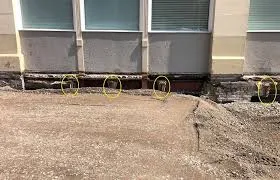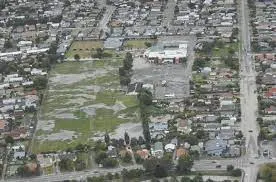Definition: The "Earthwork Cut and Fill Balance Calculator" is a tool used in civil engineering and construction to determine the volumes of soil or rock that need to be excavated (cut) and filled to achieve a desired grade or elevation for a project./* */
Earthwork Cut and Fill Balance Calculator
Continue Definition:
The "Earthwork Cut and Fill Balance Calculator" is a tool used in civil engineering and construction to determine the volumes of soil or rock that need to be excavated (cut) and filled to achieve a desired grade or elevation for a project. The goal is often to minimize the amount of material that needs to be hauled off-site or brought in, thus reducing costs and environmental impact.
Earthwork cut and fill balance refers to the process of calculating the amount of soil that needs to be excavated (cut) and the amount that needs to be added (fill) to achieve a desired grade or elevation in construction projects. The goal is to minimize the need for importing or exporting soil, which can save costs and reduce environmental impact.
To achieve a balanced earthwork, you typically:
1. **Survey the Site**: Determine existing topography and design elevations.
2. **Calculate Volumes**: Use methods like cross-sectioning or 3D modeling to quantify the cut and fill volumes.
3. **Adjust Design**: If there's an imbalance, you may need to modify the design or redistribute soil on-site.
Balancing cut and fill is crucial for efficient site grading and can influence project timelines and budgets. Exploring different methods and technologies for these calculations can also enhance accuracy and efficiency.
Factors Involved in Earthwork Cut and Fill Balance Calculation (Simplified)
In its most basic form, the calculation is simplified to:
Area (A): The horizontal area over which the cut or fill is being considered. This is measured in square units (e.g., m², ft², yd²).
Depth (D): The average vertical distance of cut or fill within the area. This is measured in linear units (e.g., m, ft, yd).
Formula (Simplified):
Volume (V) = Area (A) * Depth (D)
This gives the volume of either cut or fill. A "balance" is achieved when the volume of cut is equal to the volume of fill.
Important Note: This simplified formula assumes a uniform depth of cut or fill over the entire area. In reality, ground surfaces are rarely perfectly flat, so more complex methods are used.
Sample Values (Simplified Example)
Area (A): 100 m²
Depth (D): 0.5 m (cut)
Examples (Simplified)
Example 1: Simple Cut Calculation
A rectangular area measuring 10m by 10m needs to be excavated to a uniform depth of 0.5m. Calculate the volume of cut.
Area (A) = 10m * 10m = 100 m²
Depth (D) = 0.5m
Volume (V) = A * D = 100 m² * 0.5 m = 50 m³
Therefore, 50 cubic meters of soil needs to be excavated.
Example 2: Cut and Fill Balance (Highly Simplified)
Imagine a small project where one half of a 20m x 10m area needs to be cut by 0.3m, and the other half needs to be filled by 0.3m.
Total Area (A) = 20m * 10m = 200 m²
Area for Cut (Ac) = 100 m²
Depth of Cut (Dc) = 0.3 m
Volume of Cut (Vc) = Ac * Dc = 100 m² * 0.3 m = 30 m³
Area for Fill (Af) = 100 m²
Depth of Fill (Df) = 0.3 m
Volume of Fill (Vf) = Af * Df = 100 m² * 0.3 m = 30 m³
In this highly simplified case, the volume of cut (30 m³) equals the volume of fill (30 m³), resulting in a perfect balance.
More Realistic Scenarios and Suggestions
The simplified method rarely applies in real-world projects.
Here’s why and what to do instead:
Non-Uniform Ground Surfaces: Ground is rarely flat. Survey data (topographic maps, digital terrain models) is used to create cross-sections or grid models of the site.
Methods for Volume Calculation:
Average End Area Method: Calculates the average area of two adjacent cross-sections and multiplies it by the distance between them.
Prismoidal Method: A more accurate method that considers the shape of the volume between cross-sections.
Grid Method: Divides the site into a grid and calculates the cut or fill at each grid point. This is often used with digital terrain models.
Cut and Fill Maps: These maps visually represent areas of cut and fill, helping to optimize earthmoving operations.
Software: Specialized software (e.g., AutoCAD Civil 3D, Bentley InRoads) is used for accurate earthwork calculations, considering complex terrain and design features.
Shrinkage and Swell: When soil is excavated, it tends to swell (increase in volume). When it is compacted as fill, it shrinks (decreases in volume). These factors must be accounted for in the calculations to avoid material shortages or surpluses.
In summary: The basic formula Volume = Area * Depth provides a fundamental understanding. However, for real-world earthwork calculations, surveying data, appropriate calculation methods (like the average end area or prismoidal method) and specialized software are essential for accuracy and efficiency
The ability to accurately calculate cut and fill volumes is crucial in various industries, creating several avenues for earning money:
1. Surveying and Geomatics:
Topographic Surveys: Surveyors use instruments like total stations, GPS, and drones to collect elevation data, creating digital terrain models (DTMs). This data is then used to calculate cut and fill volumes for construction projects. Providing these survey and calculation services is a direct way to earn income.
Quantity Surveying: Quantity surveyors specialize in estimating construction costs, including earthwork. Accurate cut and fill calculations are essential for preparing accurate bids and managing project budgets.
2. Civil Engineering and Construction:
Earthwork Design and Planning: Civil engineers use cut and fill calculations to design site grading, roadways, and other earthwork projects. Optimizing cut and fill can significantly reduce construction costs and environmental impact. Providing these design and planning services is a core revenue stream for civil engineering firms.
Construction Management: Construction managers use cut and fill calculations to manage earthmoving operations on construction sites. This includes scheduling equipment, tracking progress, and ensuring that the project stays within budget.
Heavy Equipment Operation (with added value): While equipment operators primarily operate machinery, those who understand cut and fill calculations can optimize their work, minimizing wasted effort and maximizing efficiency. This can lead to higher pay or specialized roles.
Site Preparation and Grading Contractors: Companies specializing in site preparation and grading rely heavily on cut and fill calculations to accurately estimate project costs, plan earthmoving operations, and ensure that the final grade meets the design specifications.
3. Software and Technology:
Software Development: Developing or contributing to software that automates cut and fill calculations, integrates with survey data, and provides visualization tools can be a profitable venture.
GIS and Spatial Analysis: Professionals with expertise in Geographic Information Systems (GIS) can use spatial analysis tools to perform complex cut and fill calculations, especially for large-scale projects.
4. Environmental and Land Management:
Land Reclamation and Remediation: Cut and fill calculations are used in land reclamation projects to restore degraded land to a usable condition.
Land Development and Planning: Developers use cut and fill calculations to assess the feasibility of development projects and to minimize environmental impact.
Real-Life Applications and How They Generate Income:
Road and Highway Construction: Accurate cut and fill calculations are essential for designing and constructing roads and highways, minimizing material haulage and reducing costs. Contractors earn money by efficiently completing these projects.
Building Site Preparation: Preparing a building site often involves significant cut and fill. Contractors specializing in this work use these calculations to ensure a level building pad and proper drainage.
Airport Construction: Airports require large areas of level ground. Cut and fill calculations are crucial for creating runways, taxiways, and other airport infrastructure.
Dam and Levee Construction: These projects involve massive earthmoving operations. Accurate cut and fill calculations are essential for ensuring the stability and safety of these structures.
Landfill Construction: Proper grading and compaction are essential for creating stable and environmentally sound landfills. Cut and fill calculations play a key role in this process.
Key Factors for Earning Potential:
Accuracy and Precision: Accurate calculations are crucial to avoid costly errors.
Software Proficiency: Familiarity with relevant software (e.g., AutoCAD Civil 3D, ArcGIS) is highly valuable.
Understanding of Surveying Principles: A strong understanding of surveying and data collection methods is essential for accurate input data.
Communication and Collaboration: The ability to communicate effectively with clients, engineers, and other stakeholders is crucial for success.
By developing expertise in cut and fill calculations and applying it to these real-world applications, professionals can create valuable services and earn substantial income in various sectors.




























